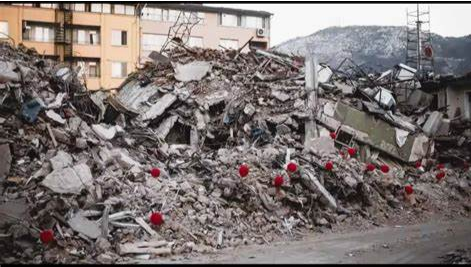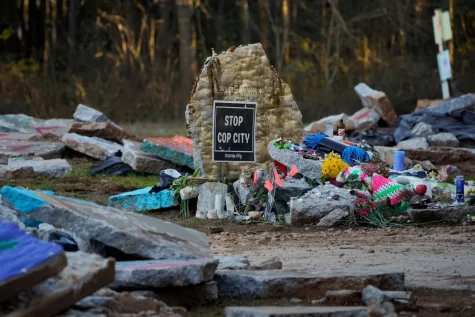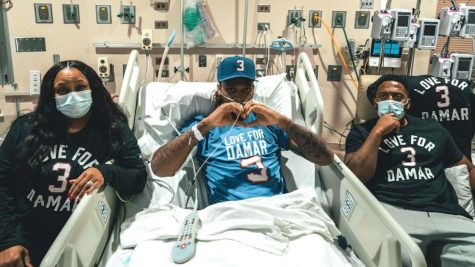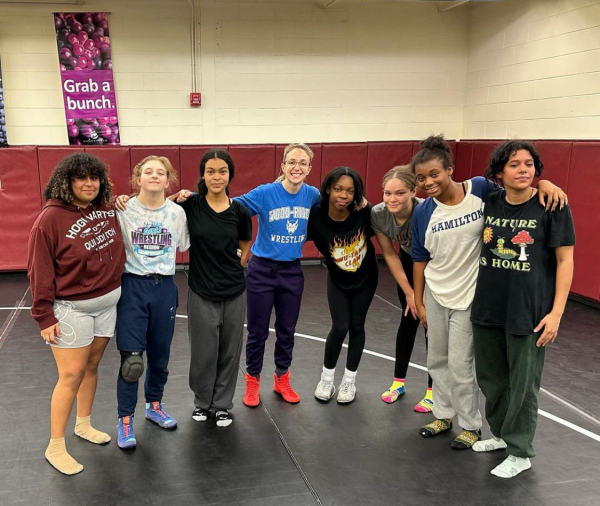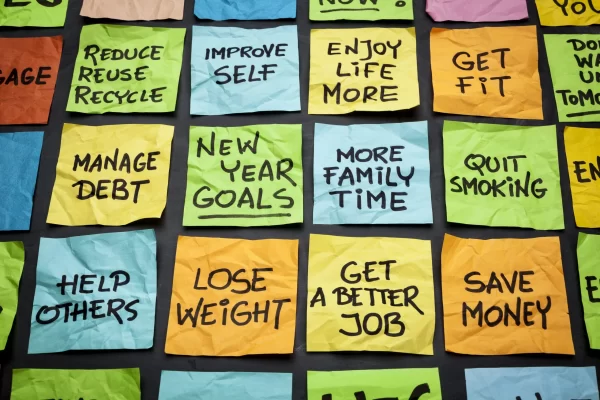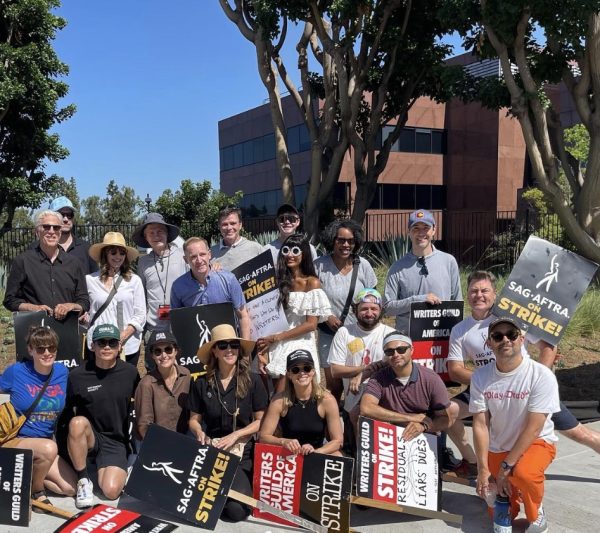Phase Two begins: But will we be able to maintain it?
Teachers, Mrs. Lonergan and Mr. Koch, practice social-distancing while teaching students both in-person and virtually, during Phase One.
Phase One of the Becton Re-opening Plan ends today, and Phase Two begins on Monday, October 19th. However, there are concerns that we may not be able to sustain this new schedule if cases were to increase. While Phase One had a hybrid schedule, with groups one and two rotating their in-person instruction, and group three fully virtual, Phase Two will combine the first two groups. Furthermore, Phase One saw the school day ending at 12:30, but Phase Two will lengthen the school hours to 2:15 pm, with the final class taking place fully virtual. All students who selected in-person learning will be present in school for five days a week. However, regardless of the district’s hopes, the chances of a second wave of Covid-19 appearing is incredibly high, and many students and parents are feeling fear over this possibility. Sophomore Hailey Bulger is concerned that “the school will get shut down again as it did in March” and she is not alone. At the time of publication, 36% of Becton students have opted for full-virtual learning. The steady rise of coronavirus cases in the United States is making way for a possible second wave. Ultimately, Phase Two in Becton will be a step towards normalization, but this tentative tread could crumble.
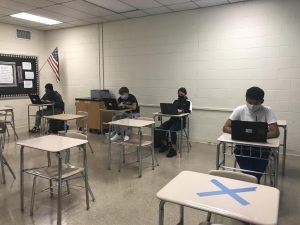
On October 13th, the modified Phase Two plan, now also including Phase Three, was released by Superintendent Dr. Sforza & the Becton administration.
Some changes for the Phase Two/Three plan include:
- The schedule will stop rotating and remain stationary. Meaning Monday is always an A day, Tuesday (B-Day), Wednesday (C-Day), Thursday (D-Day), and Friday (E/Becton Day).
- Arrival at school will take place from 8:00-8:10 am, ending 5 minutes earlier than during Phase One.
- Lunch dismissal from school will be at 12:32 Monday-Thursday & 12:31 on Fridays.
- Monday-Thursday includes a lunch break from 12:32-1:22, which the final class of the day being held virtually for all students from 1:25-2:15 pm.
- Office hours for Teachers will shorten from 2:15-2:46 pm on Monday-Thursday and 1:34-2:46 pm on Fridays.
- Fridays will consistently be Becton Infinity days in which classes will end at 12:31 am.
- Students who opt for in-person instruction will no longer be marked virtual present when they are absent from school. Joining a Google Meet class will count as an absence if you were scheduled for in-person instruction.
Part of the changes to the original Phase Two and Phase One plans was a result of Becton’s success, so far, in controlling the virus, but also out of caution about an unpredictable future. In an email sent to parents and students, Dr. Sforza expressed, “We are very happy with the way our school year has started, as well as, the way our students and staff have carefully followed our health and safety protocols and adapted to this new normal of teaching and learning.” Even though the phase two plan is clearly moving toward normalcy, there could be a potential setback. Allowing all students to return to Becton forces an increase in congestion within the school. However, Dr. Sforza is also focused on what is best for individual students, explaining that, “This modified plan will have tremendous benefits to the large [number] of students that simply don’t learn as well in a virtual environment.” Due to the mandated mask policy, social-distancing, and the increased cleaning procedures, the risk of a coronavirus outbreak in Becton is unlikely, however, the possibility should not be discarded.

The autumn season has arrived, and with it comes Covid-19 lurking in the shadows. In an article updated on October 15th in The New York Times, the authors explained that “New cases are trending upward in 36 states, including much of the Northeast, which is starting to backslide after months of progress…” Throughout the United States, various areas have experienced sudden spikes in coronavirus cases, planting the first hints of the second wave. According to data from the Covid Tracking Project, an independent collection of data from 56 U.S. States and territories, shows that 37,308 people are currently hospitalized with Covid-19 as of October 15, the highest number since August 27. Many researchers are looking to history to predict the future of Covid-19, with the CDC reminding people that the Spanish Flu of 1918 peaked in the United States during its second wave. While the second wave of the Spanish Flu occurred a hundred years ago, there is still a high probability that this coronavirus outcome will be similar. Unfortunately, the search is still on for a vaccine, and it certainly won’t be ready by the time experts say the second wave will arrive.
Another unsettling factor is that recent studies have shown that a post-diagnosed, permanent immunity from the virus does not exist. A study by King’s College London suggests that immunity might vanish in only a few months. This week, a 25-year-old Nevada man has been diagnosed with Covid-19 for the second time, the first person in the United States to repeat a case. Currently, a vaccine is our best option, but when we might receive one is still unclear.
Autumn gives Covid-19 additional opportunities to spread because of the weather. The virus can be easily swept away by a breeze or damaged by the sun outdoors, however with the weather growing colder the majority of activities will be forced to take place indoors, which only allows the virus to spread more easily. In New Jersey, restaurants were able to continue their business by serving food outside during the summer but now indoor dining has returned, raising the risk of contracting the virus while enjoying a meal. Essentially, the natural characteristics of autumn, combined with the uncertainty of antibodies and the lack of a vaccine, all serve as threatening obstacles toward New Jersey and Becton’s reestablishment of normalcy.
On September 26, President Trump, along with at least nine other members attended a White House event for Amy Coney Barrett, the president’s nominee for the U.S. Supreme

Court seat left vacant by the death of Ruth Bader Ginsburg. Many of the guests were not wearing masks, were seated close together, and went inside the White House wearing no face coverings. John James, president of the University of Notre Dame, where Barrett was a law professor, attended the event and later tested positive for Covid-19. According to a report by The Guardian, Between September 30th and October 6th, twenty-two other members across Donald Trump’s White House, election campaign, and military leaders have tested positive for coronavirus, including President Trump himself and Melania Trump. After recovering from the coronavirus, it was heavily reported that President Trump left the Walter Reed hospital after receiving medical treatment, tweeting, “Don’t be afraid of Covid. Don’t let it dominate your life”, a statement which was met with much backlash and controversy. The president’s statement disregarded the millions of people who have suffered tremendously from Covid-19, many losing their lives. As of October 15th, while 3,177,397 have been able to recover from Covid-19, 209,340 Americans have died, and some survivors have been left with life-changing complications (Covid Tracking Project). The virus can spread easily and rapidly so prevention, through masks, social-distancing, and hand-washing, is still our best method of defense. Becton’s Phase Two/Three plan will see students coming together for the first time. While this certainly is a positive step toward a traditional learning experience, it may be a long time before schools are back to ‘normal’.
Julia has started tenth grade this year and is delighted to be involved in the Cat’s Eye View. Julia’s all-time love is writing literature pieces...



